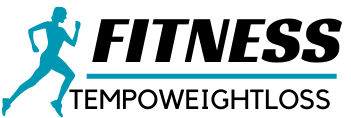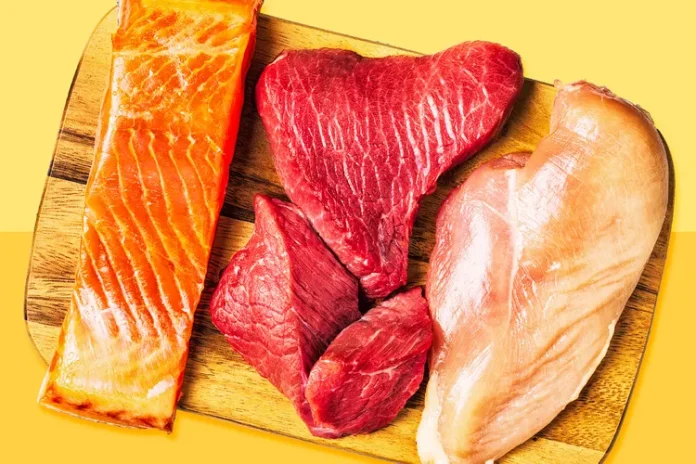The Dukan diet may not be as popular as the ketogenic or ProLon diets. But this meal pattern is gaining popularity in the weight-loss world thanks to the lofty promise of helping people lose weight quickly, making it very attractive for anyone who needs to shed pounds as quickly as possible. But while the Dukan Diet may be associated with some intriguing potential outcomes, it does have some aspects that raise red flags about how healthy it actually is to follow. To find out what the Dukan diet actually is and whether you should try it, read on to find out.
What is the Dukan Diet? How does it work?
French general practitioner Pierre Dukan created the Dukan diet back in the 1970s. At its core, the Dukan Diet is a low-carb and low-fat meal plan built around eating lean protein, drinking water, and walking for about 20 minutes a day. As with most low-carb diets, the theory is that the body transitions to burning fat by restricting carbohydrate intake.
The Dukan Diet is broken down into four phases – Attack, Cruise, Consolidate and Stabilize. How long you stay in each phase depends on how much weight you want to lose. Before starting any phase, you can use age, weight loss history, and other factors to calculate your “true” weight. Calculated by entering information on the Dukan Congress website.
Once a person is ready to start a diet, they start with the attack phase.
Phase 1: Attack Phase
The attack phase is designed to start losing weight quickly. During the first phase, participants will eat only lean protein from the diet’s allowed protein list, along with 1.5 tablespoons of oat bran and at least 6 glasses of water per day. During this time, your body should enter a state of ketosis, similar to other low-carb plans, the idea being that you’ll be using your fat stores for fuel. It was also recommended to include moderate exercise in the participants’ day. Typically, this attack phase lasts from three to seven days, depending on how much weight a person wants to lose.
Protein foods allowed during this phase include lean meats, fish, eggs, nonfat dairy products, and gluten. A little oil, lemon juice and pickles are allowed. Artificial sweetener, dietary gelatin and Shirataki noodles, low-carb noodles made with glucomannan, can be eaten in unlimited quantities.
Phase Two: Cruising Phase
Most of the weight loss will occur during the second phase of the Dukan diet, in relation to the restrictions and guidelines implemented. Transitioning to Phase 2 means adding unlimited amounts of non-starchy vegetables to your diet every other day. Examples of non-starchy vegetables include zucchini, green beans, eggplant, onions, mushrooms, lettuce, celery and cucumbers. Additionally, the plan recommends increasing the amount of oat bran to 2 tablespoons per day. A teaspoon of olive oil is allowed for cooking vegetables.
The average length of this phase is based on a three-day schedule for each pound you want to lose and can last several months, depending on your goals. The amount of weight loss that should be achieved should match the “true weight” established at the beginning of the diet.
Phase 3: Integration
This phase is considered a maintenance phase to prevent regaining lost weight and solidify new eating and exercise habits in the diet. Participants began adding previously restricted foods, such as fruit, cheese, and whole grain products such as bread and pasta and celebrated “treats” with specific quantities of foods and meals. This phase requires you to have one day per week as a “pure protein day,” which essentially means you follow the guidelines for the attack phase once a week. Oat bran and exercise are also included in this phase.
Phase 4: Stabilization
Steady is essentially how a person should eat indefinitely, according to the diet. In the final phase, a person will follow the three rules – eat pure protein one day a week and follow the “attack phase” guidelines, eat 3 tablespoons of oat bran per day, and walk 20 minutes per day . The consolidation phase should serve as the basis for meal planning during the stabilization phase, helping people avoid eating whatever they want without regard to nutritional content and value. No food is off limits, but the amount of food such as fruit is limited.
Some versions of this diet require people to avoid elevators and lean on stairs. People can also reintroduce moderate amounts of alcohol during the final life cycle stages.
Dukan Diet Food List
The diet’s 100-food list includes lean protein and vegetables. These foods are allowed in the first phase of the diet. Some foods to include on the list are:
Lean protein:
- Lean cuts of beef, such as tenderloin and filet, flank steak and brisket
- lean pork, such as tenderloin or tenderloin
- chicken and turkey
- fish such as halibut, cod, salmon, tilapia, and tuna
- low-fat deli meats, such as ham and turkey
- Soy products such as tofu and tempeh
- Fat-free dairy products, such as Greek yogurt, cottage cheese, and milk
Non-starchy vegetables:
- asparagus
- beet
- Chinese cabbage
- brocoli
- celery
- cucumber
- eggplant
- fennel
- Haricot vert
- kale
- lettuce
- mushroom
- onion
- Chinese chives
- onion
- chili
- pumpkin
- spinach
- tomato
- zucchini
During these phases, sugar-free chewing gum, sugar substitutes, spices and unsweetened tea and coffee are also allowed.
Does the Dukan Diet Work?
Whenever you make major changes to your diet, especially when you eat less, you’re likely to lose weight. While this diet may cause people to experience short-term weight loss, sustained weight loss may not be seen, as with many low-carb and restrictive diets .
As with any diet that eliminates or restricts many foods, people may be at risk for nutritional gaps that can lead to vitamin and mineral deficiencies, digestive challenges, fatigue, and other adverse side effects. Additionally, any highly restrictive diet may not be sustainable or enjoyable. With many restrictive diets, people regain the weight once they stop following the diet.
A study evaluated 51 women following the Dukan diet to assess the foods people relied on on their Dukan diet journey. The results showed excess protein intake — especially from foods of animal origin — compared to recommended nutritional standards. Fruit and vegetable intake was extremely low, which may have contributed to the observed low intakes of nutrients such as vitamin C, folate, and fiber. While the women did experience weight loss, the researchers did report “many nutritional abnormalities” when evaluating the participants. They warn that “long-term adoption of this diet may pose a health threat through the acquisition of kidney and liver disease, osteoporosis and cardiovascular disease.
Although rare, there have been reports of people experiencing nausea and vomiting from ketoacidosis while following the Dukan diet .
If a person chooses to follow the Dukan diet, they should only do so under the direction of their healthcare provider or nutritionist. Especially during the first two phases of the diet, a person may experience constipation, fatigue and even bad breath because their body lacks fiber and carbohydrates.
The Dukan Diet has been followed for decades, thanks to the weight loss that people may experience in the short term. While it is true that it is possible to experience weight loss when eliminating entire food groups, people may be at increased risk of experiencing other nasty side effects when adopting this eating pattern.
For someone who needs to lose weight quickly, this diet is an option that can be explored with the advice of a healthcare provider or nutritionist, especially if the person doesn’t have any underlying health problems, such as heart disease or diabetes. But for people who want to eat in a way that supports overall health, a more balanced and sustainable diet like the Mediterranean diet may be better for long-term health benefits and lasting weight loss .




